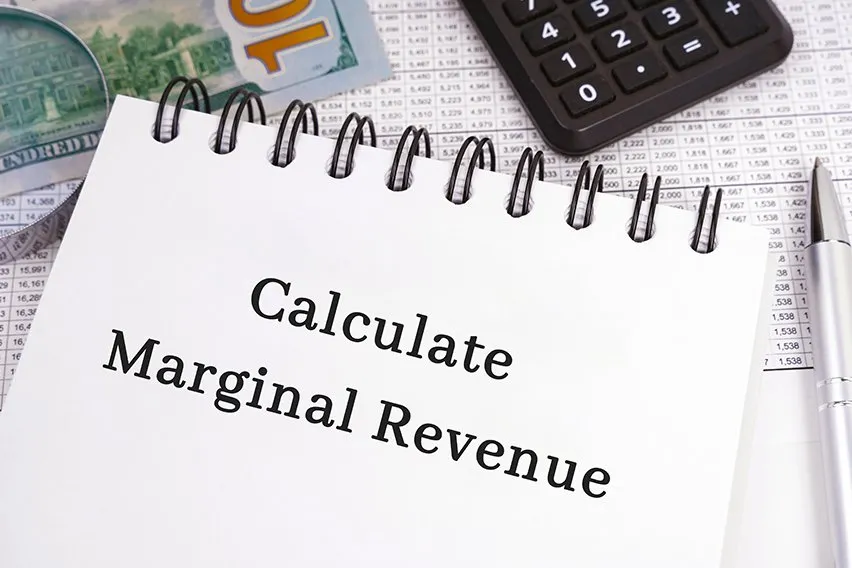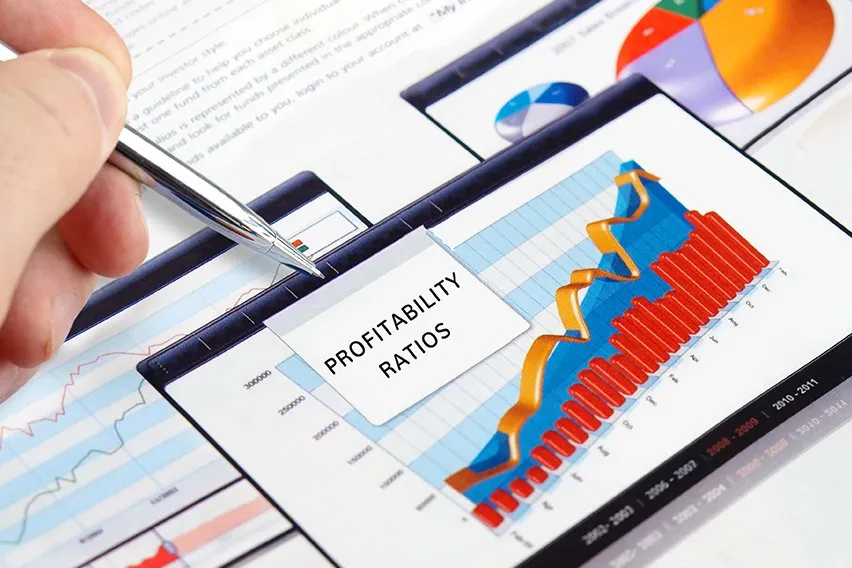Learn How to Calculate Marginal Revenue

As a business owner it’s important to fully understand your finances.
Knowing how much revenue is coming in and out of your business is key. It can help you to figure out the financial health of your company and aid in any long or short-term planning.
One of the more important things a business owner of any size should know is how to calculate marginal revenue.
But what exactly is marginal revenue, and why is calculating it important?
We’ll take a closer look at what marginal revenue is and show you how you can calculate your own.
Here’s What We’ll Cover:
What Is the Marginal Revenue Formula?
Competitive Firms vs Monopolies
Calculating Marginal Revenue In Practise
What Is Marginal Revenue?
Marginal revenue is a financial ratio that is used to calculate the change in overall income resulting from the sale of one additional unit or product.
It is essentially the additional money that you would collect or the income earned from the last unit sold.
Marginal revenue is predominantly a microeconomic term. Whilst this is normally the case, marginal revenue also has many uses in managerial and financial accounting.

Management may use marginal revenue to analyze consumer demand. It can also be used to set product prices and plan any production schedules.
Misjudging customer demand can lead to negative consequences such as product shortages. This in turn can lead to a loss of sales or production overages which can result in revenue loss due to excess manufacturing costs.
A business can take a look at its marginal revenue to figure out the scope of its earnings. This would be based upon the extra units of output sold. So a company that is looking to maximize profits would want to raise its production up to the level where the marginal revenue is equal to the marginal cost.
What Is the Marginal Revenue Formula?
Marginal revenue is relatively easy to figure out. As long as you remember that marginal revenue is the revenue that you get from the sale of the additional unit then you should be able to calculate it easily.
The marginal revenue formula separates the calculation down into two separate parts; the change in revenue and the change in quantity. This can be seen below:
Marginal Revenue (MR)=Change in Revenue (TR)Change in Quantity (Q)
You would use this formula in order to calculate the change in revenue. To do this you would just subtract the revenue figure that was there before the last unit was sold from the total revenue after the last unit was sold.
You can use this marginal revenue equation to measure the change in any production level. However, it is typically used to measure the change in producing one additional unit. That would mean that in most cases, the denominator is typically one.
Competitive Firms vs Monopolies
The marginal revenue for competitive markets is normally a constant. This is because the price level is dictated by the market and companies don’t end up having much say over the price points.
As a result, a competitive firm maximizes their profits when the marginal cost equals the market price and marginal revenue.
But this works differently for monopolies. For a monopoly, the marginal benefit of selling an additional unit is actually less than the market price. In a monopoly, because the price changes as the quantity sold changes, marginal revenue goes down with each additional unit. This means it will always be equal to or less than the average revenue.

Calculating Marginal Revenue In Practise
To put this into practise, let’s say that you are running a small bakery. You used to sell 10 muffins a day, and now you are selling 15.
Your original revenue from selling 10 muffins was $20. But now that you’ve upped it to 15, your revenue is $30.
To put these values into the formula; the change in revenue = $10 and the change in quantity = 5. So $10/5 = $2.
So this is the marginal revenue per additional unit sold.
Now let’s say that you are expanding your bakery to produce wedding cakes in a neighbourhood with stiff competition. You believe you can produce 100 cakes with a sale price of $150 each, resulting in $15,000 of additional revenue.
But to compete in this market, you estimate that you will need to drop the price from $150 per cake to $149 per cake if you produce more than 2,000 units.
So you would use the marginal revenue formula to figure out the marginal revenue if you produced one extra unit.
$49=$15,049-$15,0001
Since you dropped your price by $1 in order to produce and sell an extra unit, your revenue per unit went down. But, on the other hand this means that your total revenue increases.
Therefore the marginal revenue for creating and selling your wedding cakes is $49.
This is calculated by multiplying the new production amount, in this case 2,001 units, by the new price of $149. You then subtract the original revenue number – 2,000 units x $150 = $15,000.
Key Takeaways
As you can see, the marginal revenue definition is a relatively straightforward concept. Though it does have a large influence over how a business sets up its pricing structure and its production levels. This is of course based on the manufacturer’s industry and the product involved.
Are you looking for more business advice on everything from starting a new business to new business practices?
Then check out the FreshBooks Resource Hub.
RELATED ARTICLES

 What Is a Bad Debt Expense? Overview, Example & Calculation
What Is a Bad Debt Expense? Overview, Example & Calculation What Is Cloud Accounting? A Small Business Guide
What Is Cloud Accounting? A Small Business Guide What Are Accrued Liabilities? Definition, Types & Examples
What Are Accrued Liabilities? Definition, Types & Examples How to Do Cash Flow Analysis? The Ultimate Guide
How to Do Cash Flow Analysis? The Ultimate Guide How to Calculate HST for Small Businesses
How to Calculate HST for Small Businesses Profitability Ratios: Definition & Types
Profitability Ratios: Definition & Types